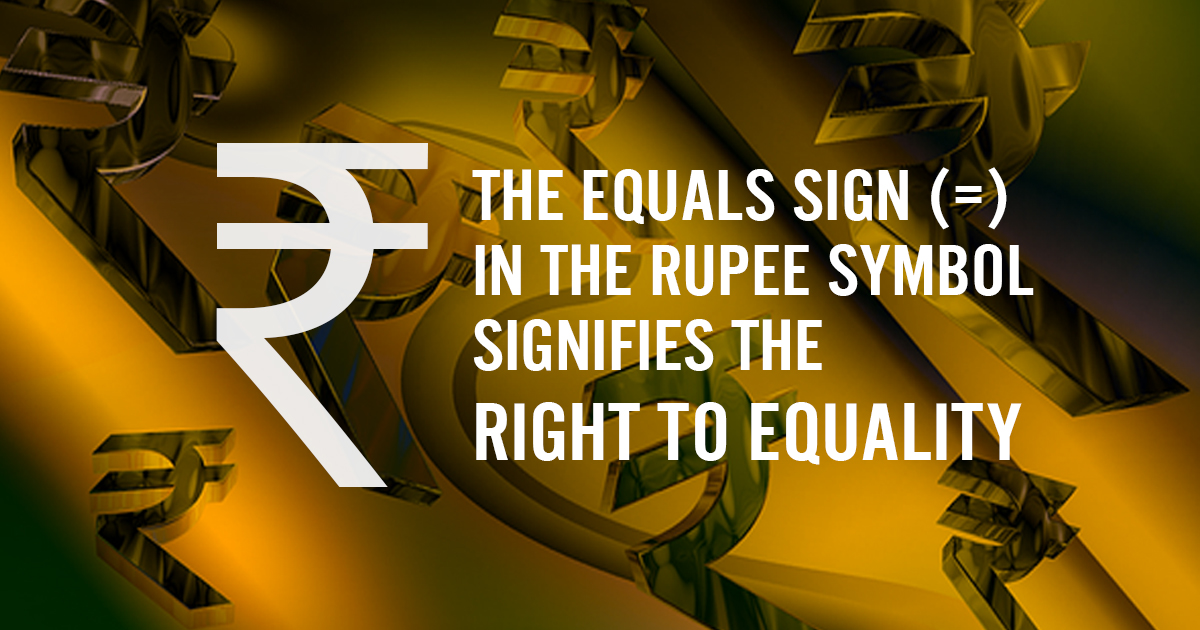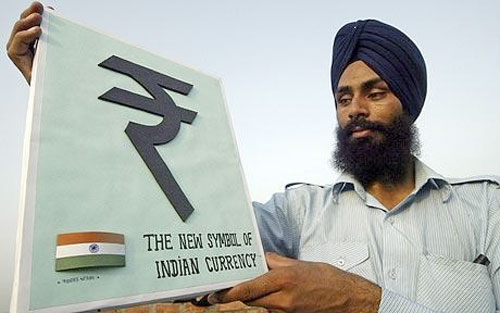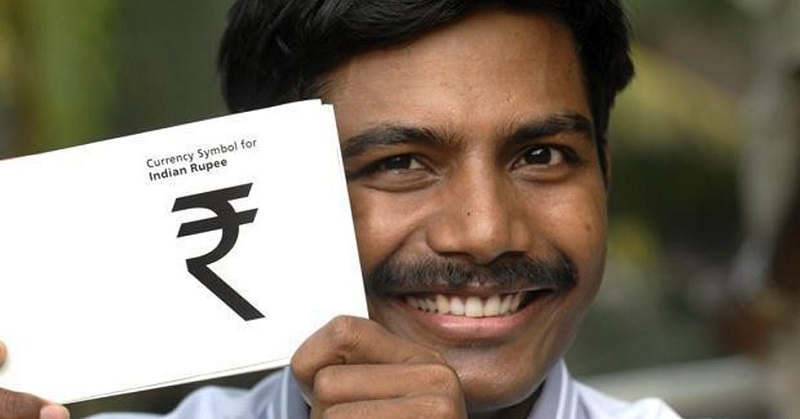Introduction
 The rupee symbol is a currency sign (usually placed in front of the number) and it has an important place in terms of India as a country and its economy. The Indian rupee sign is an amalgam of the Devanagari ‘Ra’ and the Roman capital ‘R’ with two parallel horizontal stripes running at the top. The history of Indian currency can be traced back to ancient India when the coins used were termed rupiya. The word rupee itself is derived from the Sanskrit word rupya which means a shaped silver coin. We have adopted our currency as the rupee and its symbol in the recent past.
The rupee symbol is a currency sign (usually placed in front of the number) and it has an important place in terms of India as a country and its economy. The Indian rupee sign is an amalgam of the Devanagari ‘Ra’ and the Roman capital ‘R’ with two parallel horizontal stripes running at the top. The history of Indian currency can be traced back to ancient India when the coins used were termed rupiya. The word rupee itself is derived from the Sanskrit word rupya which means a shaped silver coin. We have adopted our currency as the rupee and its symbol in the recent past.
History of the Symbol

During the budget tabled in the parliament in 2010, the then Finance Minister Pranab Mukherjee introduced the new symbol. The Indian government had decided to adopt a symbol for the Indian currency, and the design for the symbol was obtained through a competition among resident Indian nationals. The new symbol was selected by the government and it was designed by Uday Kumar, who is an Indian citizen and has the facility of an account in India. It is considered very significant,
as it would show the robustness of the Indian economy. The successful introduction of a distinct currency sign would eventually make it easier to print and type the currency. With the lack of a symbol, an INR acronym is commonly used in the international platform to denote the Indian rupee and the currency symbol is termed as fully convertible. However, with the introduction of the new sign, third-party development and maintenance of software could be accurately undertaken, and it provides an opportunity to standardize the symbol in the world platform.
Definition of the Rupee Symbol

Adopted by the Government of India on 15 July 2010, after a public competition to select it, the Indian rupee sign is an amalgam of both the Devanagari consonant “र” (ra) and the Latin capital letter “R” without the vertical bar that is used in standard English language writing. This parallel line with the top of the symbol, similar to that of the US dollar sign, represents the flag of India as well as a symbol of hope.
The rupee sign is also called the “ra”. Why did they select that name? Because “ra” is the basic consonant in the Gurmukhi script, present in some Indian languages including Hindi, it is also the most common currency symbol in that region. Interestingly, the design and the conceptual ideology of the Indian rupee sign are very innovative and well-thought-out, and they reflect a lot of information about India’s culture as well as its economic preferences! The Indian government assigned ₹ U+20B9 for the Unicode on 1 August 2010, which strikes down the opponents’ claim that no ELSE existed on the date of release.
The Unicode is a universal formula provided for writing any language and creating web pages. Selecting the Unicode, allows the Indian rupee sign to be included in the computer programming software, which is useful for monetary and economic data recording in India. Having its standard currency achieve Unicode, brings a lot of convenience towards web designers and system administrators as they could ensure a standard for dealing with Indian currency in the system.
Origin and Design
The idea of a distinct identity for the Indian Rupee was suggested by Udaya Kumar, a graduate of the Indian Institute of Technology in 2009. The main reason for such a suggestion was the failure of the countries to refer to Indian currency as suggested by our people. He used Devanagari, the first and the most type as most of the Indian language used it. So now it can be written in any language that uses Devanagari script, either Hindi, Sanskrit, Marathi, etc.
The symbol is an amalgam of Devanagari ‘Ra’ and the Roman capital ‘R’ without the stem. The parallel and the equality structure of the two lines also show the nature of Indian society. The flag and the two horizontal lines in the symbol were assigned by the government to the special identity of India. The design is modified several times after Udaya Kumar gives his first idea for the symbol.
Till 2010, the Indian rupee did not have its own officially acceptable identity, so it was recognized with Rs or full Rupee. Then finally our government accepted the suggestion by Udaya Kumar in 2010 and launched this symbol for the public. The Indian Rupee is the only money in the world that uses an “alpha-symbol” as the abbreviation of the currency.
Global Recognition of the Rupee Symbol

Global recognition of the rupee. The Re. has been assigned a Unicode number U + 20B9 and inscribed in the Unicode standard version 6.1.0 on 31st October 2010. As per the existing international standard, certain agencies and organizations update, maintain and monitor the arrangement and use of currency symbols based on the list of ISO standards. The currency symbols are collected and the list of ISO 4217 ‘Currency codes’ is issued by the Maintenance Agency for the Code list (ISO 4217/M) at the Swiss agency for standardization and the Unicode Technical Committee. The Unicode for the Re. and the Indian national standard IS 13194 also describe the details of the symbol and the standard governing and design of the symbol. Through global recognition,
it will ensure that the Rupee will be traded and accepted outside India. This will make trade and financial transactions fast and quick. Also, it will bring international attention and more business opportunities to India. Many countries have weaker currencies but they have stronger currency symbol like Vietnam – Dong symbol is ₫ and the weaker part does not show on the currency symbol. This is because of the global recognition of that particular currency.
Global recognition with the standardized symbol enhances the currency’s integrity and sets trust in customers’ minds when they are indulging in any financial transactions. The global recognition of this symbol represents India’s economic might in the world. It also denotes the fact that India is now considered to be an important seat of international trade and commerce by the leading nations.
